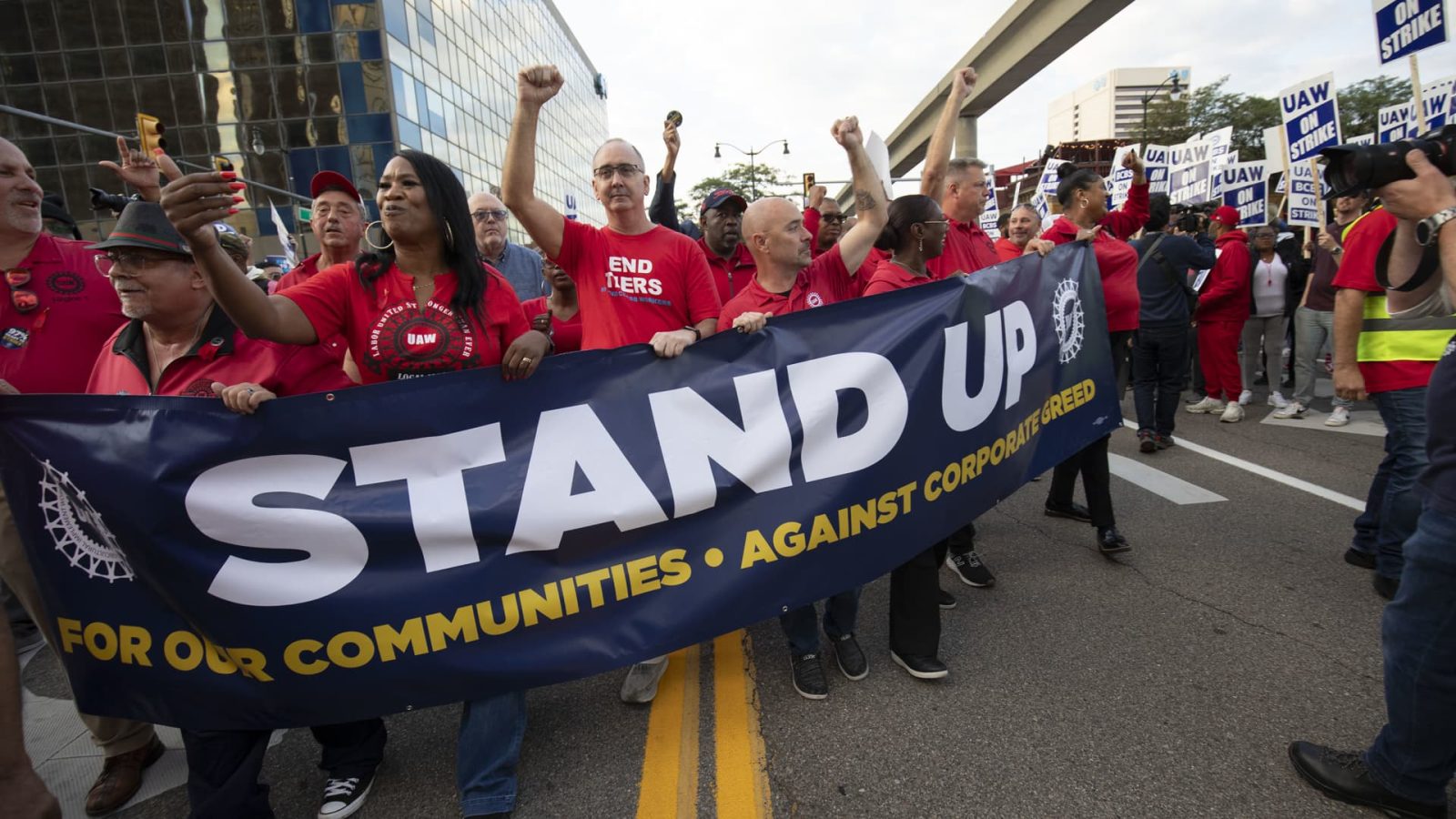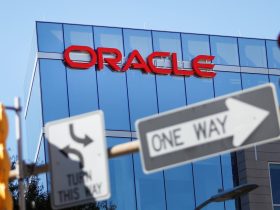The United Auto Workers strike entered Day 4 on Monday, and both sides remained far apart on pay hikes. Club name Ford (F), which has the most UAW members of all of the big three Detroit automakers (D3), might have to take things into their own hands, Jim Cramer said Monday after a weekend of little progress in reaching a new labor agreement. By striking Ford, the UAW is “playing with fire,” according to Jim, who said the automaker might get tired of trying to appease union demands and just lock workers out. Ford on Friday temporarily laid off nearly 600 workers at its Michigan Assembly Plant in Wayne, which largely makes Bronco SUVs and Ranger pickup trucks. It’s the same facility that has departments targeted in the walkout. These layoffs are not a lockout — but the result of these employees not being able to do their jobs because of the ripple effect of other striking workers. In addition to Ford’s Michigan Assembly Plant, the UAW has work stoppages at a General Motors (GM) site in Wentzville, Missouri and a Stellantis (STLA) center in Toledo, Ohio. In all, about 12,700 UAW workers walked out at these three locations last week after the union’s old labor agreement with the automakers expired Thursday at 11:59 p.m. Chrysler-parent Stellantis over the weekend increased its offer to raise UAW members’ pay by 20% over 4½ years, with an immediate 10% hike to start. It’s an offer on par with what we have already seen from Ford and GM, and it was also rejected. The UAW, which originally demanded 40%, has since lowered its ask to 36%, plus the return of pensions along with cost-of-living adjustments. The UAW may look to increase the pressure with more strikes, but the D3 are not powerless. If they feel the demands simply are not possible, and that meeting them would put their businesses at risk, we could see them threaten to move certain U.S. operations to Mexico. Such a drastic measure would be painful for both sides, and it could take three years to get additional plants in Mexico up and running. However, if they have to, the D3 can likely outlast the UAW, which has a limited strike fund to pay its workers who are off the job. By walking out of just three plants, the union will be able to stretch its war chest. Ford CEO Jim Farley told CNBC last week that UAW demands would bankrupt the company. The auto strike comes at a time when the legacy players in the industry, such as Ford, GM and Stellantis, are trying to ramp up their production of electric vehicles, which are caught up in a price war. Goldman Sachs on Monday cut its estimated prospects for EV leader Tesla (TSLA), mostly on forecasts for lower average selling prices (ASPs). We’re highlighting this research note because Tesla is pretty much the price maker when it comes to the electric vehicle market. As a result, any reduction in its ASPs is going to pressure the price of EVs sold by others, including the D3, which are now looking at a potential topline headwind as they work to grow their EV market share. Sales pressure makes it even harder for the D3 to meet the demands of the UAW, which has been largely targeting the profitable internal combustion engine (ICE) businesses at the D3. That dynamic, however, could be even more incentive for the D3 to stick to their guns and consider alternative locations for production. Ford has made its electric vehicle operations central to the company’s future. However, its Model e division is still losing tons of money. In addition to top-line pressure on its EV unit and companywide cost pressure from the UAW strike, Ford needs to work its way through this transition from high-profit ICE vehicles to the currently money-losing EVs. GM and Stellanis are facing the same type of challenges. Washington also needs to tread carefully. President Joe Biden did come out on Friday in support of the UAW, saying the automakers need to share record profits with the workers who made that possible. But, we don’t know whether Biden is going to come down too hard on the D3. Yes, he must side with the union — after all, he has repeatedly touted himself as the “most pro-union president ever.” No doubt, he wants to bolster that image after signing a bill in December 2022 to block a national U.S. railroad strike for fear of what that would mean for the U.S. economy. Now that we’re heading into an election, keeping the economy afloat — and out of recession — is more important than ever, especially for White House incumbents. Biden can’t support an auto deal that would bankrupt the D3, nor can he support a labor agreement that would see the American auto jobs move to Mexico. The president is in a tough spot as are both the UAW and the automakers. And, as we wrote Friday , the strike is being watched by workers across many manufacturing industries, hoping the UAW demands don’t hasten the continued drive to automate more and more factory functions, especially now that companies are starting to understand how artificial intelligence can run it all. (Jim Cramer’s Charitable Trust is long F See here for a full list of the stocks.) As a subscriber to the CNBC Investing Club with Jim Cramer, you will receive a trade alert before Jim makes a trade. Jim waits 45 minutes after sending a trade alert before buying or selling a stock in his charitable trust’s portfolio. If Jim has talked about a stock on CNBC TV, he waits 72 hours after issuing the trade alert before executing the trade. THE ABOVE INVESTING CLUB INFORMATION IS SUBJECT TO OUR TERMS AND CONDITIONS AND PRIVACY POLICY , TOGETHER WITH OUR DISCLAIMER . NO FIDUCIARY OBLIGATION OR DUTY EXISTS, OR IS CREATED, BY VIRTUE OF YOUR RECEIPT OF ANY INFORMATION PROVIDED IN CONNECTION WITH THE INVESTING CLUB. NO SPECIFIC OUTCOME OR PROFIT IS GUARANTEED.
The United Auto Workers strike entered Day 4 on Monday, and both sides remained far apart on pay hikes. Club name Ford (F), which has the most UAW members of all of the big three Detroit automakers (D3), might have to take things into their own hands, Jim Cramer said Monday after a weekend of little progress in reaching a new labor agreement.
Read the full article here









Leave a Reply